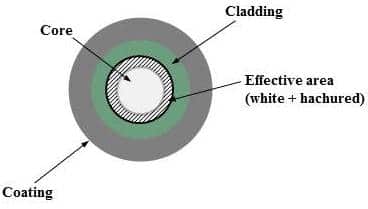Routine tissue staining
Haematoxylin and eosin (or H&E- see our H&E 101 articles here and here) is the most commonly used stain in histology labs, representing the ‘bread and butter’ stain for most pathologists who diagnose disease, and for researchers who work with many tissue types. It highlights the detail in tissues and cells, using a haematoxylin dye to stain cell nuclei blue, and an eosin dye to stain other structures pink or red making them easy to distinguish using histology microscopes.
Special stains
Although H&E is an essential everyday stain for many pathologists and researchers, sometimes a little extra help is required to reach a diagnosis, or further evaluate a tissue- usually to differentiate components that have already been seen in H&E-stained tissue sections, but need to be definitively identified.
Traditional special stains
This is where the so-called ‘special stains’ come in handy. This term describes a large number of alternate staining techniques and histochemical procedures that are used in situations where H&E cannot provide all the information needed by a pathologist or researcher. These techniques use a variety of staining methods to more readily visualise components of a tissue using histology microscopes. In principle, they work by taking advantage of intra- and extra-cellular chemical reactions between the tissue components and dyes. Typically they use a chemical or dye with an affinity for whatever is under investigation, enabling specific tissues, structures, or even microorganisms to be stained.
A couple of examples
For instance, although bacteria can be seen on H&E stains, Gram-negative and Gram-positive organisms stain the same colour (you can read the article on Gram staining here). A special stain, a Gram stain, is therefore needed to differentiate between them. Similarly, various substances can take on a similar appearance in H&E-stained tissues, so special stains may be required to help determine what they are. For example, connective tissue and amyloid, amongst other substances, appear pink (or ‘eosinophilic’) in H&E-stained tissues, and need to be differentiated, especially in diseased tissues. However, a trichrome stain is effective at demonstrating the presence of connective tissue, while Congo red staining can be used to identify amyloid in tissue sections (this article explains more about Congo red).
The need for positive controls
Generally, when special staining is performed on a section of tissue, a positive control section is also stained. This involves simultaneous staining of a section of tissue known to contain the substance in question. This will be given to the pathologist or researcher at the same time as the test tissue section, and serves various purposes. In particular, it helps to determine whether the special stain technique is working, and also serves as a reference of what the substance should look like in the test tissue section.
Immunohistochemistry
While some regard this technique as a special stain, immunohistochemistry is a more advanced staining technique than the traditional special stains, with each immunohistochemical (IHC) stain recognising a very specific target protein. IHC stains are monoclonal antibodies that are raised against specific target proteins and amplified by cloning; antibodies are then labelled with a marker that stains with a red or brown counterstain, enabling the target to be visualized using light microscopy.
Lots of special stains!
There are hundreds of special stains in use, each with its own unique properties, which can help evaluate certain cellular or tissue components, and even demonstrate the presence of pathogens. Although these stains play a very important role in histology, they are best used to confirm a suspected finding after evaluation of H&E-stained tissue sections, rather than being used in isolation to make a diagnosis.
Want to know more about histology? Visit the Bitesize Bio Histology Hub for tips and tricks for all your histology experiments.
Wondering what histological stain will stain the tissue you’re interested in? Download our free, colorful guide to histological stains and pin it up.
And if you’d like to learn more about special stains for histology and how they could benefit your research? Check out our free eBook on special histology stains.






